
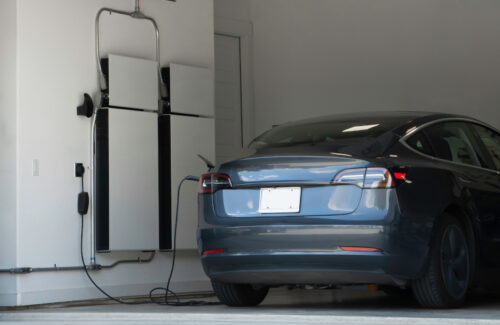
On February 19th, the National Electrical Manufacturers Association (NEMA) announced the release of the Electric Vehicle Supply Equipment (EVSE) power export permit standard, which defines the technical parameters that allow electric vehicle owners to use their vehicles as mobile energy storage devices and sell excess energy back to the grid. This standard outlines the characteristics of devices to achieve bidirectional charging instead of traditional unidirectional current flow to vehicles, effectively allowing electric vehicles to transmit power back to the grid. This standard defines the characteristics of key areas such as electrical, communication, and network security to allow for power output between EVSE and the power system. With the help of bidirectional or vehicle to grid (V2G) and vehicle to building/home (V2B, V2H) technologies, electric vehicles can act as energy storage devices or mobile energy storage units on the wheels, providing power to homes, buildings, and the grid itself. In addition, this standard can also make it easier for electric vehicle owners to store energy at night or when turned off, and then sell the electricity back to the grid in a profitable way during peak hours, allowing electric vehicle owners to earn back money. Patrick Hughes, Senior Vice President of Technical Affairs at NEMA, said, "Advanced bidirectional charging technology will play a key role in improving the resilience of our country's power grid and helping electric vehicle owners use their vehicles for more purposes than just from point A to point B. NEMA's Electric Vehicle Supply Equipment (EVSE) power export licensing standards are an important tool for achieving these goals, and local jurisdictions should refer to this standard when licensing these systems NEMA's mobile division has developed this standard as a practical resource to enhance grid resilience and reflect today's electrification landscape.
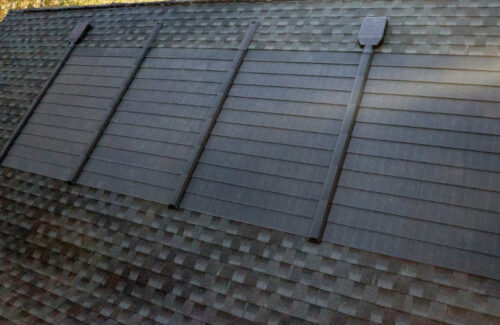
Three years after launching its first studable solar tile to the market, GAF Energy today launched its second-generation Timberline Solar product. The Timberline Solar ES 2 provides 23% more electricity than its predecessor -57 W per tile. The Timberline Solar ES 2 represents everything we have learned about solar roofs and has been further refined through extensive feedback from contractors and homeowners. This is an innovation that provides a more powerful, easier to install, and versatile solar tile than ever before GAF Energy President Martin DeBono said. In addition to higher power output, the Timberline Solar ES 2 has also improved its appearance through a smaller conversion box and simplified wiring. It has a depth of less than 1/4 inch and is compatible with the complete GAF Timberline tile series. The product is assembled at GAF Energy's manufacturing plants located in Texas and California.
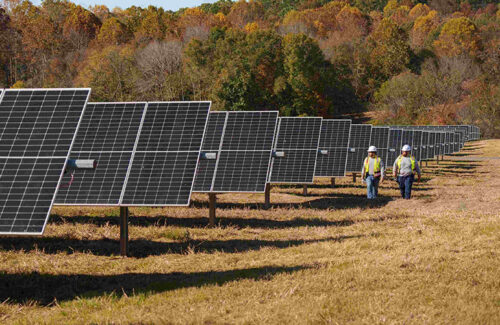
EDP Renewables North America has launched its Ragsdale solar park in Madison County, Mississippi. The project will be put into operation at the end of 2024, with a power generation capacity of 100 megawatts, and will provide electricity for the Entergy Mississippi transmission system. Amazon has signed a full energy off take contract for the system through a 15 year Power Purchase Agreement (PPA). The development of Ragsdale began in 2016, by Acadian Renewable Energy, a joint venture between SunChase Power and Eolian. EDPR NA acquired Lagsdale from Acadian in early 2022 and subsequently completed the development of the project. Throughout the entire lifecycle of the project, approximately $34.6 million in taxes will be paid to the local government to improve schools, roads, and other basic services. We will also pay approximately $15 million to local landowners, who will rent out a portion of the land to build the infrastructure for the solar park. Lagersdale has hired over 100 people to build these projects and will fill up to three full-time positions to operate and perform daily maintenance of the solar park. Lagsdale also promised to use SOLARCYCLE to recycle over 3200 solar panels, approximately 120 tons of damaged or discarded panels. Ragsdale marks EDP Renewables' continued commitment to Mississippi, its communities, and local businesses. The opportunity to develop utility scale solar energy and directly contract with customers such as Amazon is invaluable, who are also committed to expanding their business in Mississippi. We are proud to help the state's commercial and industrial development through local energy solutions, "said Sandhya Ganapathy, CEO of EDP Renewables North America. During the development of Ragsdale, EDPR NA collaborated with Signal Energy and Beta Engineering to explain to community leaders and stakeholders how renewable energy can stimulate community economic growth. Lindsey Launius, Director of Market Strategy at Beta Engineering, stated that the EDPR NA team is passionate about driving positive development in the communities they have built. Usually, this means directly engaging with the community throughout the entire project lifecycle to ensure transparency and recognition from landowners and nearby residents. I am honored to collaborate with clients such as EDPR NA and their stakeholders to help them tell their stories and propose a unified approach to energy transition
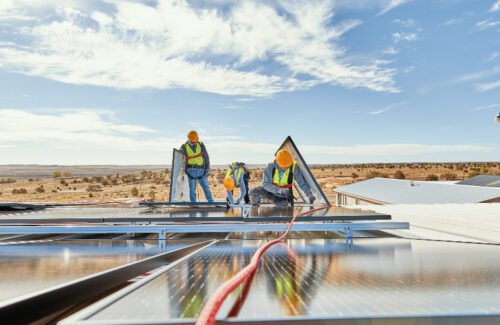
Sunnova Energy, a solar service company, announced that it will lay off 300 employees to reduce costs and streamline operations. The 300 layoffs this time mainly come from its commercial department, accounting for 15% of the total number of employees in the company. Sunnova will save $35 million in cash annually due to layoffs. Sunnova stated that the company is positioning itself to achieve long-term success in the constantly evolving market currently facing high interest rates and policy uncertainty. Sunnova CEO John Berger said, "As we continue to focus on capital efficiency and high profit core customers through TPO, we must always optimize in the current economic and policy environment. In order to better position Sunnova's long-term success, we are taking proactive measures to simplify our operations while maintaining a strong foundation to support our valuable dealer network and end-user customers. These decisions are never easy, and we recognize their impact on every member of the team. For those who will not move forward with us, we are committed to providing support during the transition period and deeply appreciate everything they have done for our organization. We greatly appreciate their contributions and are committed to supporting those affected during the transition period. People Sunnova collaborates with local solar installation companies to provide solar energy to customers through third-party ownership (TPO) contracts. The customer leases solar projects from Sunnova. Last year, Sunnova mandated that all its solar projects comply with domestic content requirements and provided a limited number of American made solar products to solar installers to complete the projects. Sunnova stated that this move will support domestic manufacturing, but also enable Sunnova to apply for larger investment tax credits in TPO projects. However, due to high interest rates, the TPO market has experienced turbulence in the past few quarters. SunPower filed for bankruptcy in August 2024, while Sunrun will focus on energy storage and auxiliary electric vehicle services to withstand solar rollercoaster rides.
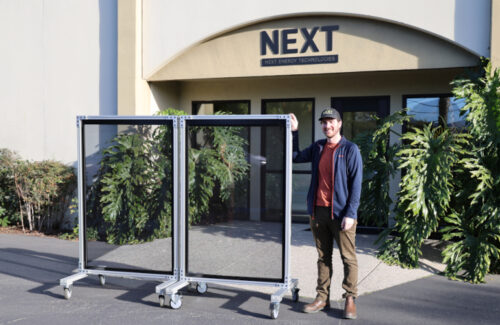
NEXT Energy Technologies, a pioneer in organic photovoltaic (OPV) technology, has upgraded its trial production line in California to produce 40 x 60 inch laminated transparent power windows using its unique NEXT OPV coating and manufacturing process. The company stated that these 40 x 60 inch units are the world's largest transparent OPV windows. This trial production marks an important step for the glass industry towards producing full-size visual area glass for cleaning and solar powered exterior walls. NEXT OPV coating solves three major challenges in creating scalable solutions for the commercial glass industry: aesthetics, performance, and manufacturability. The neutral gray coating imitates the most commonly used color in North American commercial exterior walls, combined with power generation and online manufacturing, creating a valuable solution for the glass industry. The combination of the highest quality aesthetics, power generation, and integration with the glass supply chain is a key factor driving net zero building design, "said Andy Cohen, Co Chairman of Gensler, a construction group." Just last year, we showcased NEXT's 27 x 35 inch OPV windows in our Los Angeles office. With this larger window format, we can focus on sustainable building projects NEXT is preparing demonstration facilities with major partners in the United States and Europe, while focusing on transitioning from pilot to production scale and obtaining UL safety and performance certifications for grid connected projects. Daniel Emmett, co-founder, executive chairman, and CEO of NEXT, said, "This milestone further demonstrates the industry's thirst for solutions, where our OPV coating combined with advanced manufacturing processes is effective, scalable, and can be quickly deployed. This is evidence that gives us confidence in achieving commercial production of 60 x 120 inches NEXT's proprietary transparent OPV coating can transform commercial windows into clean energy generating exterior walls, making buildings more sustainable and resilient, and reducing power grid pressure. These windows not only generate on-site electricity, but also absorb and convert infrared light, thereby reducing the building's HVAC requirements.
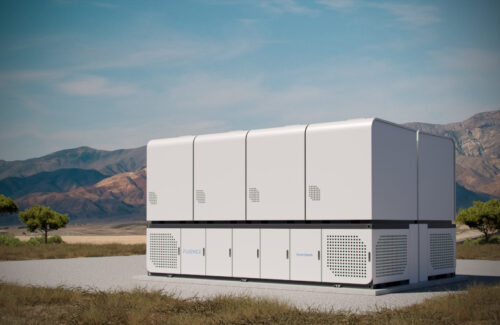
Fluence Energy's Smartstack energy storage platform is now commercially available for grid scale applications. The AC power system is expected to start delivery in the fourth quarter of 2025. Smartstack's patent pending design strategically breaks down battery storage systems into units that are easy to transport in terms of weight and size, thereby reducing transportation restrictions and installation complexity. On site, the system can maximize the density of the project site, providing up to 7.5 MWh of energy density when integrated with a 300 Ah power generation battery. This density is about 30% higher than the currently available communication systems. This platform can generate more megawatt hours of electricity within the existing project footprint, thereby reducing costs and making previously limited sites available for developing storage projects. Smartstack has reimagined energy storage design through a flexible modular architecture that can be tailored to meet different market demands. Two hour and four hour energy storage times, as well as longer six hour and eight hour energy storage times, are now available for purchase. The proprietary appearance of this product includes two key components: Intelligent slide rail - the basic platform that accommodates the core of the Smartstack system. The intelligent slide rail integrates advanced cooling equipment, power control system hardware, all cables, and comprehensive monitoring functions, and has convenient maintenance access. Battery compartment - The Smartstack battery compartment is located at the top of the Smart Skid and contains the system's battery units. The battery compartment supports battery units from multiple suppliers, ensuring the most competitive prices and optimal performance. The battery compartment is also designed to be interchangeable with replacement units during maintenance or technical upgrades to maximize system availability. Fluence President and CEO Julian Nebredo said, "Fluence's innovative record and execution speed drive us to lead the energy storage industry forward. With our industry-leading expertise in developing and deploying innovative solutions globally, Smartstack has reimagined the way systems are designed, built, and maintained. By addressing key challenges such as supply chain transportation restrictions, product density, maintainability, and modularity, we provide a platform that is more scalable and easier to operate than competitive solutions. This means that our clients can achieve excellent project economic benefits Smartstack's innovative approach ensures up to 99% availability and leverages Fluence's long-term service agreement to maximize revenue. Its innovative approach places intelligence, not hardware, at the core of innovation. This platform enhances system intelligence through locally deployed AI, autonomously optimizes embedded control, and provides comprehensive visibility across storage combinations.
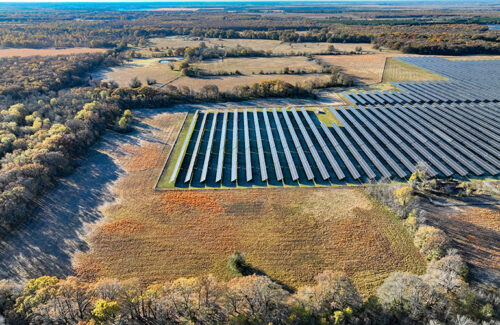
Invenergy announced that the 300 MW Delilah I solar center located in Lamar County and Red River County, Texas, has begun commercial operations. WEC Energy Group is the major shareholder of Delilah I. The energy generated by Delilah I Solar will be purchased by Honda Motor Company (200 MW) and Tesla (100 MW) through a Virtual Power Purchase Agreement (VPPA) and transmitted to the local power grid. Bristi Cure, senior vice president of renewable energy development of Invenergy, said: "Land owners and larger local communities have played an important role in Invenergy's realization of Delilah I commercial operation, creating good jobs for Texans, and cooperating with WEC, Honda, Tesla and other automobile giants to increase more American energy for the power grid." "With the growth of power demand, Invenergy attaches importance to every opportunity, supports customers' operation with affordable, reliable and clean energy solutions, and brings meaningful economic impact to Americans in our project community."
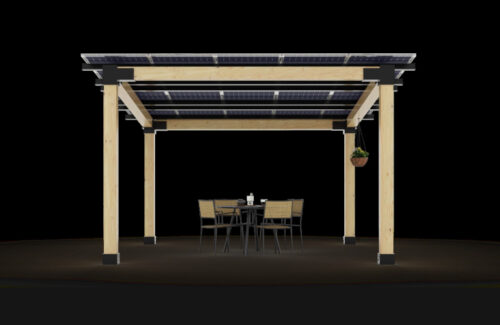
Brooklyn Solar Canopy is launching three new solar panel installation systems: Post Truss, Cantilever, and Wood Post. TR Ludwig, CEO of Brooklyn Solar Canopy and its sister company Brooklyn SolarWorks, said, "This expansion of our product line is a direct response to the constantly changing needs of our customers. By adding column trusses, cantilevers, and wooden column installation systems, we can now provide a complete solution for any project, from large-scale commercial installations to residential backyard installations. We are pleased to offer our customers more choices and help them achieve their solar energy goals, regardless of their unique requirements Rear truss The Post Truss system is highly suitable for residential and small commercial environments. It has a small foundation, unsupported span, and can withstand high wind and snow loads. It can be used to create solar carports or customer parking sheds, and can also customize integrated electric vehicle charging stations and other functions to maximize investment returns and provide multiple benefits. cantilever The cantilever installation system only provides support at one end, making it ideal for small and large commercial parking lots and sidewalks that require open pedestrian or driving areas. Compared to a full canopy, its design minimizes the structural footprint to the greatest extent possible. Wooden pillar The wooden pillar scheme provides a natural and aesthetically pleasing solution, making it ideal for residential and small commercial spaces that prioritize aesthetics. The size and appearance of the wooden pillar system are similar to a pavilion, and can be integrated into the roof or backyard, serving as both an energy source and a practical terrace or outdoor living space. These three systems have been carefully designed to be durable and reliable, ensuring long-lasting performance and maximizing energy output. Brooklyn Solar Canopy News
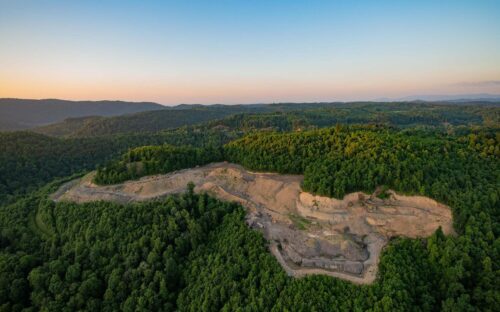
The Nature Conservancy and Cumberland Forest Limited Partnership have announced a new agreement with Sun Tribe Development and ENGIE to develop 14 solar and 3 battery storage projects on a 360 acre old coal mine in the Appalachian Mountains. This is the second round of clean energy project announcements released by the Cumberland Forest Project of the Nature Conservancy in Virginia, Tennessee, and Kentucky. The new project will be developed on previous coal mines, such as the open-pit coal mine in Campbell County, Tennessee. Image source: TNC/Cameron Davidson The Cumberland Forest Energy Project aims to demonstrate that developers can build clean and renewable energy on old mines in an economically efficient manner, while benefiting the community. They adopt renewable energy development methods, striving to create benefits for climate, protection, and community - what TNC calls "3C". TNC uses LevelTen Energy to solicit competitive project proposals and ensure that selected projects comply with 3C standards. As these projects are designed and constructed in the coming years, they are expected to provide more local taxes, short-term construction employment opportunities, and dedicated funds to fund additional community welfare. When choosing a partner company, we look for companies that are willing to work with us to push the boundaries of clean energy development, "said Brad Kreps, Director of TNC Clinch Valley. Developing projects on the former coal mine and engaging local residents in a way that benefits the community requires wisdom, skills, and determination. Ultimately, we chose Sun Tribe and ENGIE, two experienced developers with a strong interest in realizing this vision Sun Tribe's new projects will be located in Virginia and Tennessee. Sun Tribe plans to develop a 5-megawatt solar project and three utility scale energy storage systems, with power generation ranging from 80 megawatts to 150 megawatts. These energy storage projects will improve the reliability of the power grid in the region and reduce the need for future grid upgrades - costs that are typically passed on to utility customers. Danny Van Clief, CEO of Sun Tribe Development, said, "Building solar and battery energy storage facilities in previous mining areas is very reasonable for us. These facilities and their communities have provided our country with electricity supply for over a century - all we need to do is re plan them to adapt to today's energy technologies ENGIE plans to develop 13 community scale solar projects in old mines in Virginia, Tennessee, and Kentucky. These projects also utilize the incentive measures of the Inflation Reduction Act, which helps to reduce project costs. ENGIE's project scale ranges from 1 MW to 6 MW, which will increase local access to clean energy.
Categories
New Products
Tin Roof Rapid Solar Mounting System with Hanger Bolt Read More
Residential Small Solar Easy Bracket Kit for Home Balcony Read More
Automatic Single Pile Solar Tracker with 10 PV Panels Read More
Angle Adjustable Aluminum Easy Solar Panel Bracket for Garden Read More
Intelligent Single Post Dual Row Solar Tracking System Read More
5000ES Solar Off-Grid Energy Storage Inverter Supplier Read More
Multi Drive Double-Sided Single Axis Tracker System Read More
© Copyright: 2025 Xiamen Wintop New Energy Tech Co., Ltd.. All Rights Reserved.

IPv6 network supported
Friendly Links:
Integrated Solar System